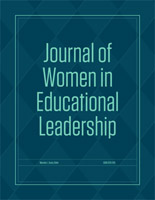Educational Administration, Department of

Journal of Women in Educational Leadership
Date of this Version
9-2017
Document Type
Article
Citation
Journal of Women in Educational Leadership, 2017 doi: 10.13014/K21Z42K0 http://digitalcommons.unl.edu/jwel/
Abstract
Student access to arts education, and the quality of such instruction in the nation’s public schools, continue to be of concern to policymakers, educators, and families. Specifically, research has focused on the questions: To what extent do students receive instruction in the arts? Under what conditions is the instruction provided? The passing of the Every Student Succeeds Act (ESSA) was a significant move by the Senate, as they had not considered K-12 public education legislation on the Senate floor since 2001. Under this federal law, the arts are included as part of a “well-rounded education” requiring that the arts have equal billing with reading, math, science, and other disciplines in K-12 public education. This designation is an acknowledgement of the relevance of the arts in a complete education and means that the arts may be an eligible expenditure of funds for federal education programs (Davidson, B., Kahn, G., & Fitzsimons, I., 2015, p. 2). This research contributes to the discussion of public K-12 arts education funding and programming in the era of the ESSA.


Comments
Copyright 2017 Annette M. Vargas